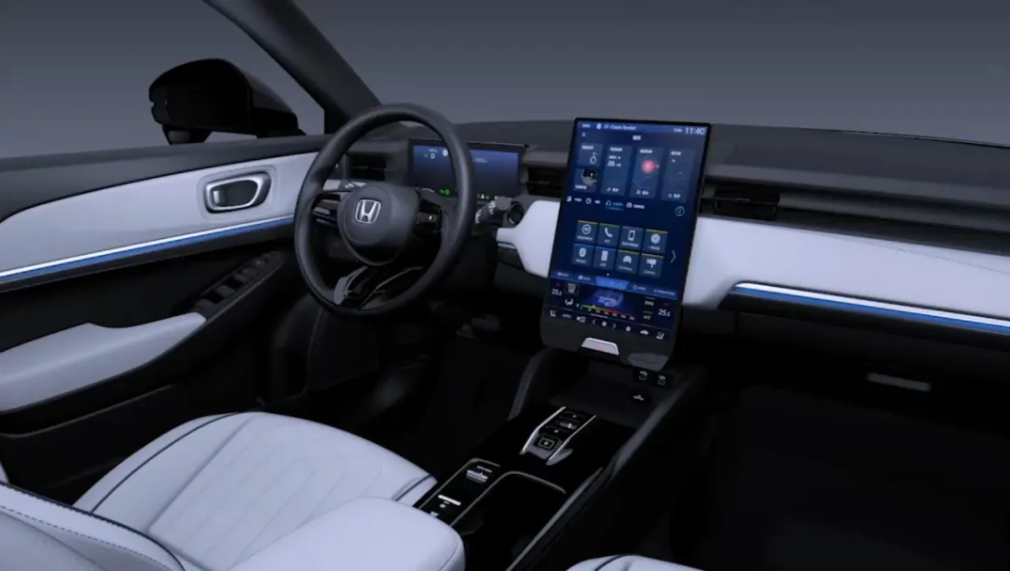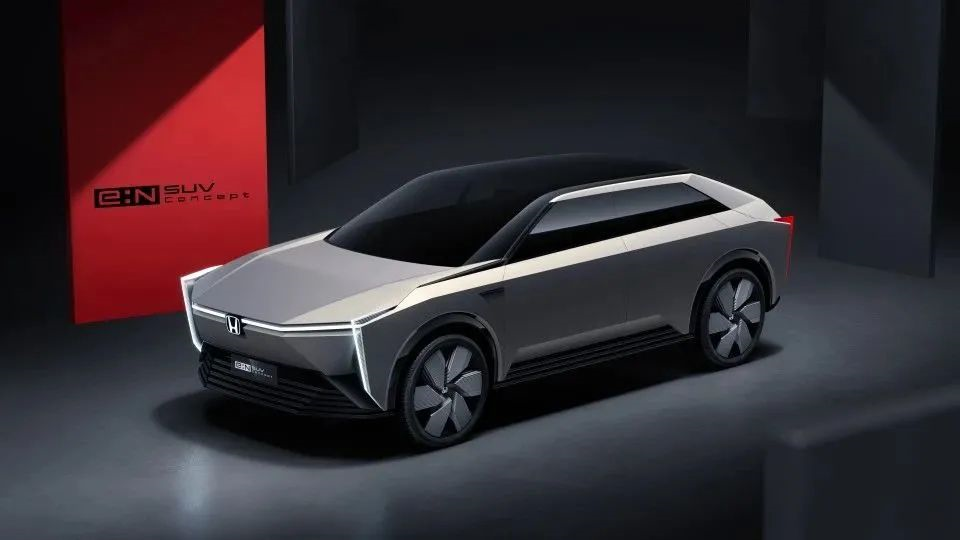Honda’s Electrification Strategy in China
On October 13th, Honda teamed up with its two Chinese joint ventures – GAC Honda and Dongfeng Honda to hold a conference to announce Honda’s electrification strategy in China. During the conference, Honda announced its plan of launching 10 electric vehicle models under the “Honda” brand in China within the next 5 years, and all new models launched after 2030 in China will be electrified, including pure electric BEVs, hybrid HEVs, and plug-in hybrid PHEVs.
To support this electrification plan, Honda officially launched its new pure electric brand “e:N” and kicked off a new round of electric vehicle offensives. The first two models under the “e:N” brand, e:NS1 and e:NP1, will be officially unveiled at the Wuhan Auto Show and the Guangzhou Auto Show respectively and will be mass-produced and listed by Dongfeng Honda and GAC Honda in the spring of 2022. In addition to these two models, three more concept cars based on the “e:N” platform were also unveiled at the conference: the e:N Coupe concept, the e:N SUV concept, and the e:N GT concept, which are expected to be launched one after another within the next five years.
Before the launch of e:NS1 and e:NP1, Honda had previously launched VE-1 and X-NV, two electric vehicles in China, but they were under the Ideo and Ciimo brands, serving as transitional products from gasoline to electric vehicles to help Honda earn new energy credits and meet regulatory requirements. However, Honda did not choose to use the Honda logo on these vehicles as they did not have sufficient competitiveness and brand attribute. In Honda’s view, the Honda brand has always been synonymous with high-quality vehicles and oil-electric vehicles with obvious performance deficiencies are not eligible to carry the Honda badge.In September of this year, according to the statistics of the China Association of Automobile Manufacturers (CAAM), the sales volume of broad passenger vehicles in China reached 1.606 million, and the sales volume of pure electric vehicles reached 276,000, which increased by over 200% year-on-year and accounted for 17% of the total sales volume. Tesla, BYD, NIO, and XPeng, among other pure electric vehicle enterprises, achieved good growth in their sales volume. Specifically, Tesla delivered over 56,000 vehicles in China in a single month, and the Model Y achieved over 30,000 sales to rank first in the domestic SUV market, surpassing Haval H6, Changan CS75, Geely Boyue, Volkswagen Touareg, and other popular SUV models. Therefore, Honda should seize the opportunity to invest in competitive pure electric vehicle models in the Chinese market, which not only satisfies the requirements of new energy credits but also is a profitable business.
In fact, Honda even regards China as the pioneer market for its comprehensive electrification transformation. After 2030, Honda will no longer launch new fuel vehicles in China, and all new models will be electric vehicle models, such as pure electric vehicles and hybrid vehicles. In a broader scope, to achieve the two strategic goals of “carbon neutrality” and “zero deaths in traffic accidents” by 2050, Honda has planned that the sales percentage of pure electric vehicles and fuel cell electric vehicles in advanced markets including China will reach 40% in 2030, 80% in 2035, and 100% in 2040.
Regarding the prospects of the e:NS1 and e:NP1, if the three concept cars are full of technology and give people a sense of blood boiling, then the e:NS1 and e:NP1 bring us back to reality. After all, concept cars are concept cars, and production cars are production cars. However, the symbolically new logo and the “Heart beat interaction light language” full of vitality that they carry are also quite exciting. During the charging process, a variety of light language expressions make it easy for users to understand the charging status at a glance, which not only has good practicality but also highlights the owner’s personality.At the level of the entire platform, the “e:N” series provides two different pure electric architectures with different driving methods, “e:N Architecture F” and “e:N Architecture W”. The front-wheel drive “e:N Architecture F” will be applied in small and medium-sized cars, while “e:N Architecture W” includes two versions: AWD and RWD, which will be applied in medium and large cars.

The early-produced e:NS1 and e:NP1 will be based on the front-wheel drive “e:N Architecture F” intelligent and efficient pure electric architecture. This architecture will integrate a high-rigidity pure electric vehicle-specific frame, a three-in-one high-power motor, and a large-capacity battery with a maximum range of more than 500 kilometers. As a model for home users, such range is sufficient to meet daily commuting needs and can also meet the needs of suburban self-driving.


The ordinary intelligent networked technology has no major highlights.
Overall, Honda has created the full-stack intelligent control ecosystem “e:N OS”, which integrates Honda SENSING, Honda CONNECT and intelligent digital cockpits, and together constitutes the backbone of its next-generation intelligent networked technology.

In terms of the car internet, Honda CONNECT 3.0 pure electric vehicle-specific version will become the car internet product that Honda relies on most in the future.

In terms of hardware, with the largest 15.2-inch central control screen among models of the same level, as well as a 10.25-inch color full LCD digital instrument panel, e:NS1 and e:NP1 create a sense of intelligence and future in the digital cockpit.The software side of the car features more than 20 functions such as natural and fluent AI voice assistant, car-home interconnection, energy management, and OTA online upgrades, covering basic functions. You can use your mobile phone to remotely control functions such as car doors, windows, and air conditioning, and even start the car without a key.
The highlight is that the new car will be equipped with Honda’s DMC driver status perception system for the first time, which can not only effectively identify the driver’s status but also perceive the driver’s emotional changes.
In terms of driving assistance, Honda has released its latest comprehensive safety driving assistance system “Honda SENSING 360”. The system adds 5 millimeter-wave radars to the front and corners of the car on the basis of a single-eye camera, achieving 360-degree sensing. It includes collision mitigation braking system, warning for vehicles at front crossroads, collision suppression function when changing lanes, lane change assistance function, and cornering vehicle speed adjustment function.
According to Honda’s introduction, the new “Honda SENSING 360” draws on a lot of knowledge and experience accumulated by Honda in L3 autonomous driving technology research and development, but there is still an obvious gap with the L2+ level driving assistance system of domestic new forces with navigation functions, not to mention that many brands will produce models with LIDAR in the future.
Different from Toyota and Nissan, Honda, known for creating high-quality cars, is smaller in size and scale than the former two. Therefore, in the process of transitioning to comprehensive electrification, Honda has less baggage and can be more aggressive in its strategy, which is worthy of our recognition.

However, except for the few concept cars with aggressive styling, Honda still cannot break free from the traditional framework of a traditional car company’s inherent thinking constraints. There have been no revolutionary changes in both product strength and marketing models. In the context of strong domestic competitors, Honda’s electric vehicles still need to spend a considerable amount of thought to break through.
Nevertheless, the prices of these two mass-produced models have not been announced yet, and perhaps a higher cost performance ratio can provide consumers with the greatest reason to buy.
This article is a translation by ChatGPT of a Chinese report from 42HOW. If you have any questions about it, please email bd@42how.com.
